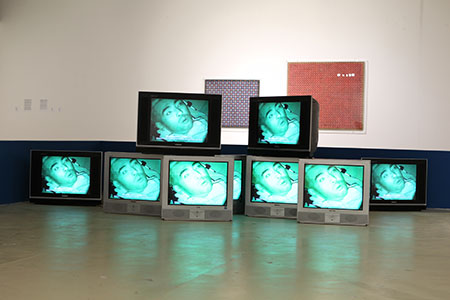7th Shenzhen Sculpture Biennale

The artist as an intuitive creator is not the most fashionable framework for looking at contemporary art, particularly amidst the fragments of a globalizing cultural sphere. Nevertheless, for the 7th Shenzhen Sculpture Biennale, titled ‘Accidental Message: Art is Not a System, Not a World’, curators Liu Ding, Su Wei and Carol Yinghua Lu (the latter of whom is a contributing editor of frieze) turned to the ‘self-practices’ of artists. Such a focus risked a Romantic return to the characterization of the artist as a unique and inspired being, yet what emerged was an affirmation of artistic agency, grounded in a reflection on Chinese artists of the 1990s, whose work staged alternatives to the difficult conditions of rapid commercialization and governmental cultural politics.
Formerly titled the ‘Shenzhen International Contemporary Sculpture Exhibition’, this edition saw the exhibition re-named as a biennial and brought under the auspices of the Overseas Chinese Town (OCT) company. Presented at the OCT Contemporary Art Terminal (OCAT), the biennial also marked the start of an ambitious ‘Art Museums Cluster’, which will establish a network of OCT-sponsored contemporary art centres in five major Chinese cities. A moderately sized undertaking by biennial standards, ‘Accidental Message’ presented some 50 works across OCAT’s three former factory buildings, situated amidst a newly-minted leisure precinct in Shenzhen’s southwest. The even-handed displays made a set of connections between works from the 1990s and today, and from China and abroad.
The exhibition was broken down into two categories: the first, ‘Unexpected Encounters’, featured Chinese art from the 1990s; while the second, ‘What You See Is What I See’, compiled a diverse selection of recent works by overseas artists. The title for the former section was borrowed from the editorial statement of the 1997 exhibition-as-publication ‘Wild’. Written by ‘Wild’ organizers Song Dong and Guo Shirui, it took a stand against art orientated towards museums or galleries, criticizing a loss of the unexpected within the formula of institutions at the time. The biennial included an original edition of ‘Wild’, one of a handful of publications featured in the broader biennial that was edited, or curated, by Chinese artists in the 1990s. Flipping through their pages, a material strand of history became evident. Chinese Contemporary Artists’ Agenda (1994), for instance, compiles proposals for works by 19 artists, each represented by a head-shot, a CV and a description of their (mostly unrealized) projects. Similarly, the 1995 postcard publication 45 Degree as a Reason records works produced on a single day by ten artists in ten different locations across China. These artists’ publications shared a preference for projects undertaken with humble means or as small interventions in the everyday.
Such a tendency towards basic or mundane materials was common to many of the exhibited works from the 1990s. Qian Weikang’s Ventilating the Site (1995), for example, was first presented in an exhibition at a children’s library in Shanghai. Weikang fitted the hall’s windows with curtains attached via spring-scales which measured the air that moved through the exhibition. Two similarly reconstructed windows were situated in the main halls, standing as portals that linked the spaces. Notably, in 1996 Wiekang withdrew from visual art to become a writer, expressing his dissatisfaction with the commercialization of art at the time.
Companion contemporary works were interspersed throughout the historical pieces in ‘Accidental Message’. Alongside works by emerging Chinese artists such as Yan Xing and Chen Zhou, the geographical scope encompassed a number of artists more familiar to European and US art circuits, such as Simon Fujiwara, Haroon Mirza, Danh Vo and Darius Mikšys.
The more recent works tended to drift alongside the historical pieces, and at times the connections that linked them could be difficult to discern. The most resonant works were often those dealing with temporality and the everyday, such as the eerily captivating re-enactments of Li Yu and Liu Bo’s To Be Titled (2011). Across a series of screens, these videos played as vignettes that animated the scenarios of municipal newspaper headlines. In the second hall, Zhang Enli’s Rolling Ball and The Geography Class (both 2012) were a compelling presence. A field of globes roughly re-painted as sports balls stood in front of a low-set canvas that depicted balls coming loose from a net. With a playful painterly touch, these pieces gestured to the varied worlds of the everyday with a witty take on the confounding complexity of the geopolitical.














